Giulio Paolini (Genoa, 1940) is the protagonist of a new exhibition at the Alfonso Artiaco Gallery in Naples: titled Fuori quadro, the show exhibits eight works, four of which were made for the occasion, along with several previously unpublished collages. The works on display all relate to art history, from Polyclitus to Manet, from Watteau to De Chirico. With the aim of bringing out fragments of the past that are still significant for art today. We asked him a few questions. The interview is by Federico Giannini.
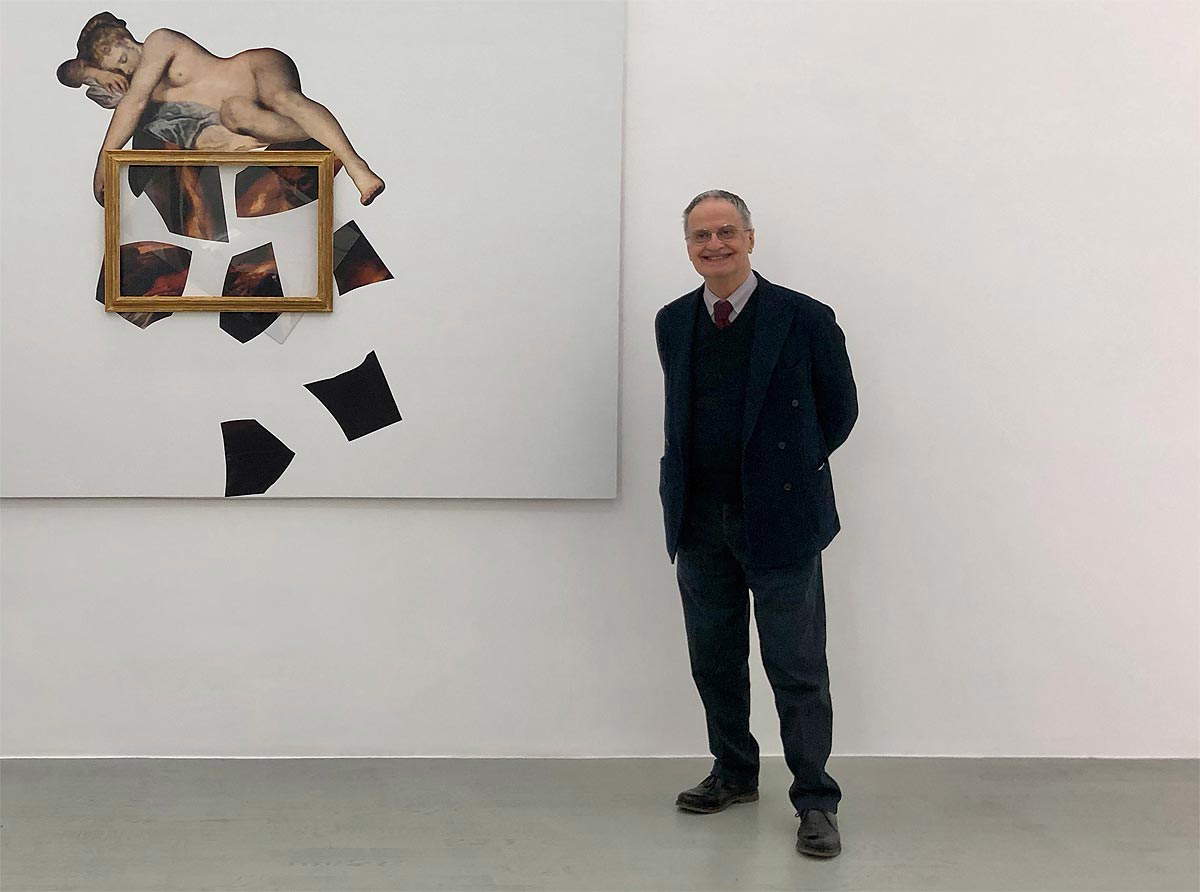 |
| Giulio Paolini |
FG. As is often the case in His art, there are several references to art history. With His works, He wants to show us that valid meanings for the present and for contemporary art continue to emerge from the art of the past. What is your relationship to the art of the past?
GP. The truth is (if truth can still be spoken of) that the art of the past is not yet and will never be “past.” The dilemma, the enigma is where and how the nexus is hidden that each time we might trace between one work and the next, or rather what is forwarded without ever contradicting itself along the continuous line of History.
Lei declares himself “a prisoner of an inventory of figures,” and says that the classics “had a particular attitude with images: rather than proposing them, they waited for them, at a certain distance.” So for you, too, is it a matter of detached waiting?
That’s right: continuous immersion in the universe of images does not exclude, indeed procures, a certain detachment. I don’t feel so much like an artificer in the grip of creativity and inspiration, but a figure discreetly awaiting the decanting of images.
Your new works include some collages on Pompeii, in which you make a portrait of the archaeological site, and state that “classical is distance, ancient is remoteness,” and that the ancient cannot be approached. What difference, then, do you discern between “classical” and “ancient”?
More than a difference, it is an “acquired” kinship between two subjects: one, the ancient, detached and more austere; the other, the classical, more serene and discursive. Both always present and communicative.
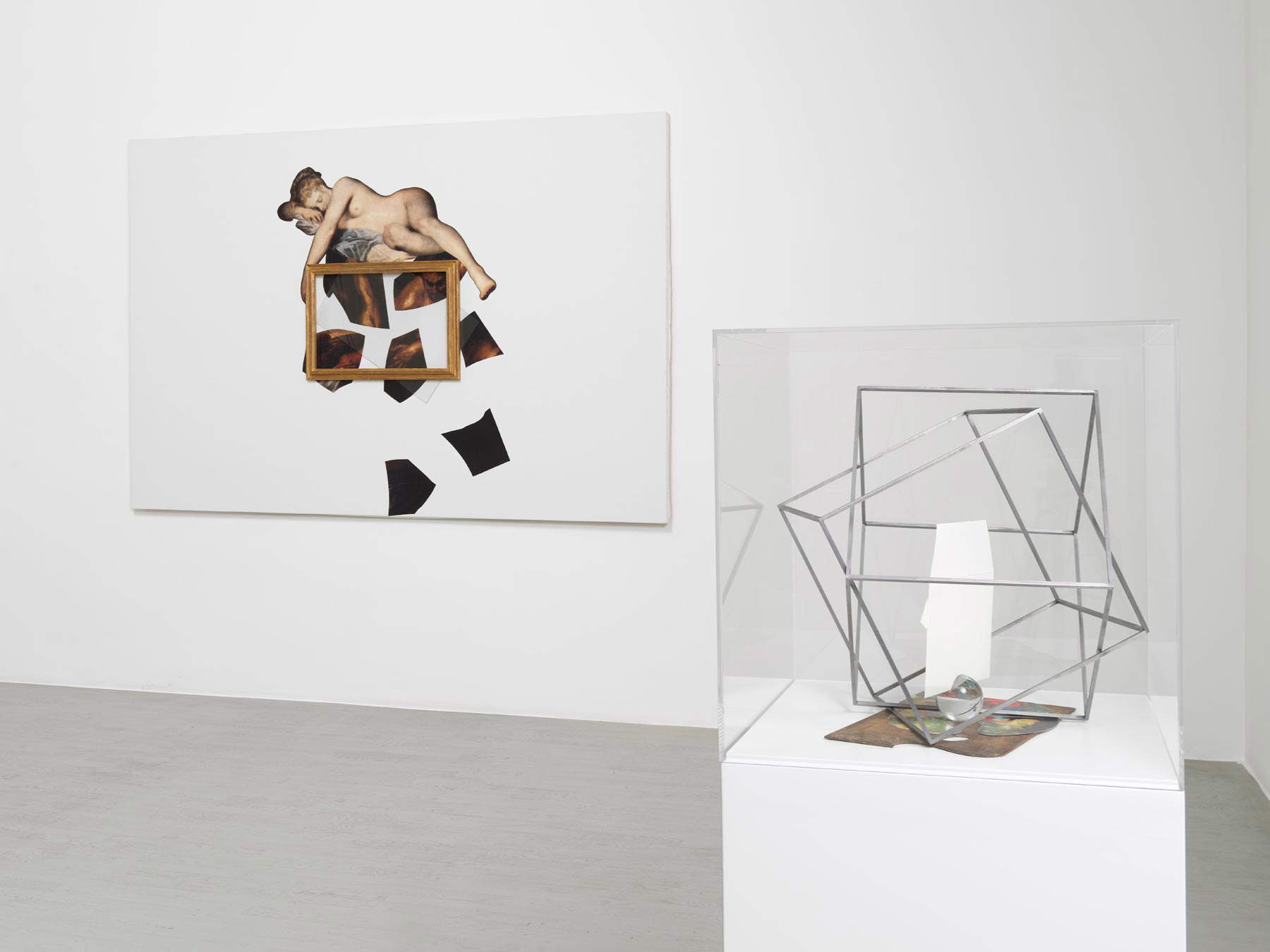 |
| Giulio Paolini, Fuori quadro, partial view of the exhibition, March 2021, Alfonso Artiaco, Naples. Photo: Grafiluce |
 |
| Giulio Paolini, Fuori quadro, partial view of the exhibition, March 2021, Alfonso Artiaco, Naples. Photo: Grafiluce |
 |
| Giulio Paolini, Fuori quadro, partial view of the exhibition, March 2021, Alfonso Artiaco, Naples. Photo: Grafiluce |
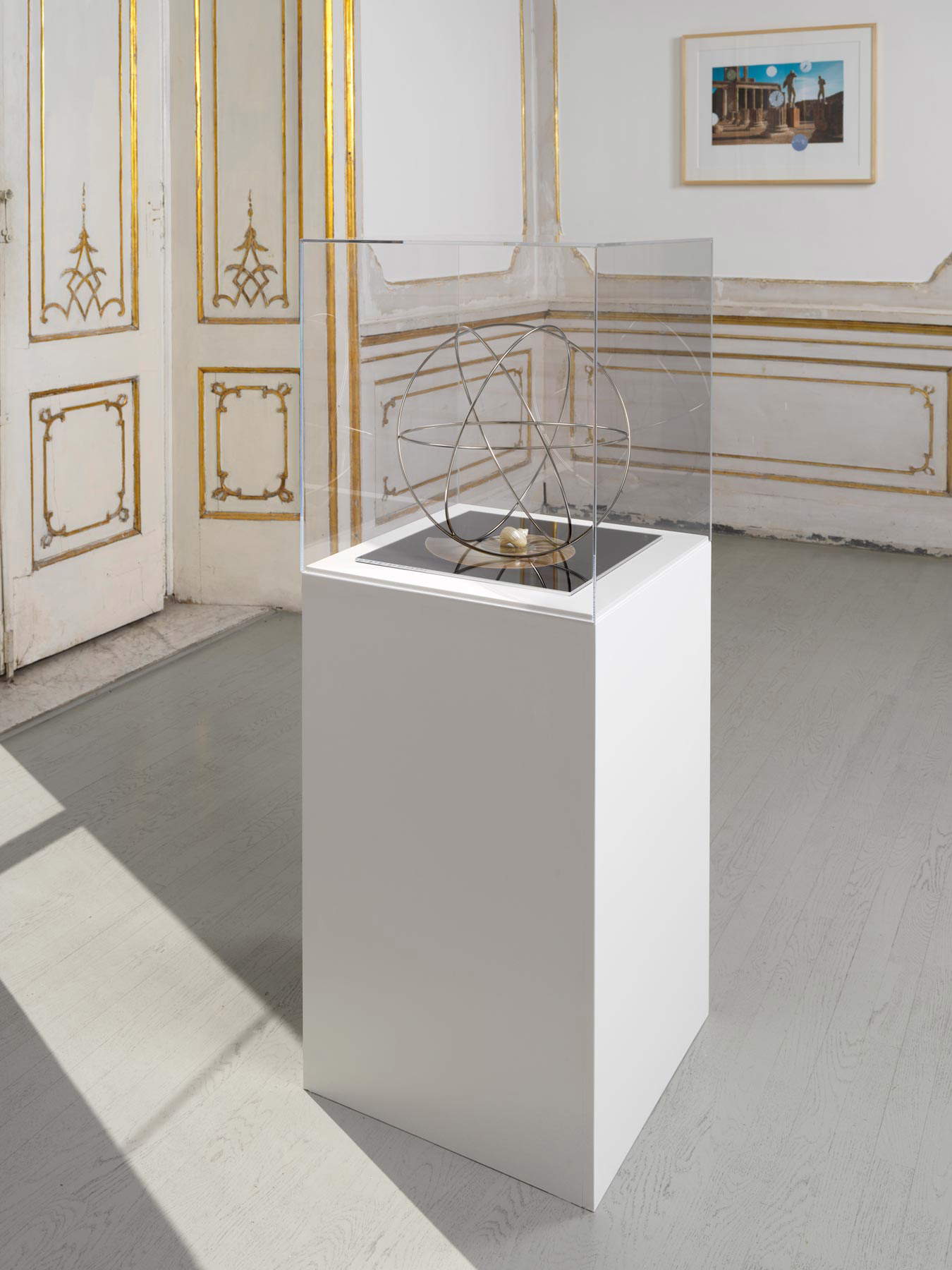 |
| Giulio Paolini, Fuori quadro, partial view of the exhibition, March 2021, Alfonso Artiaco, Naples. Photo: Grafiluce |
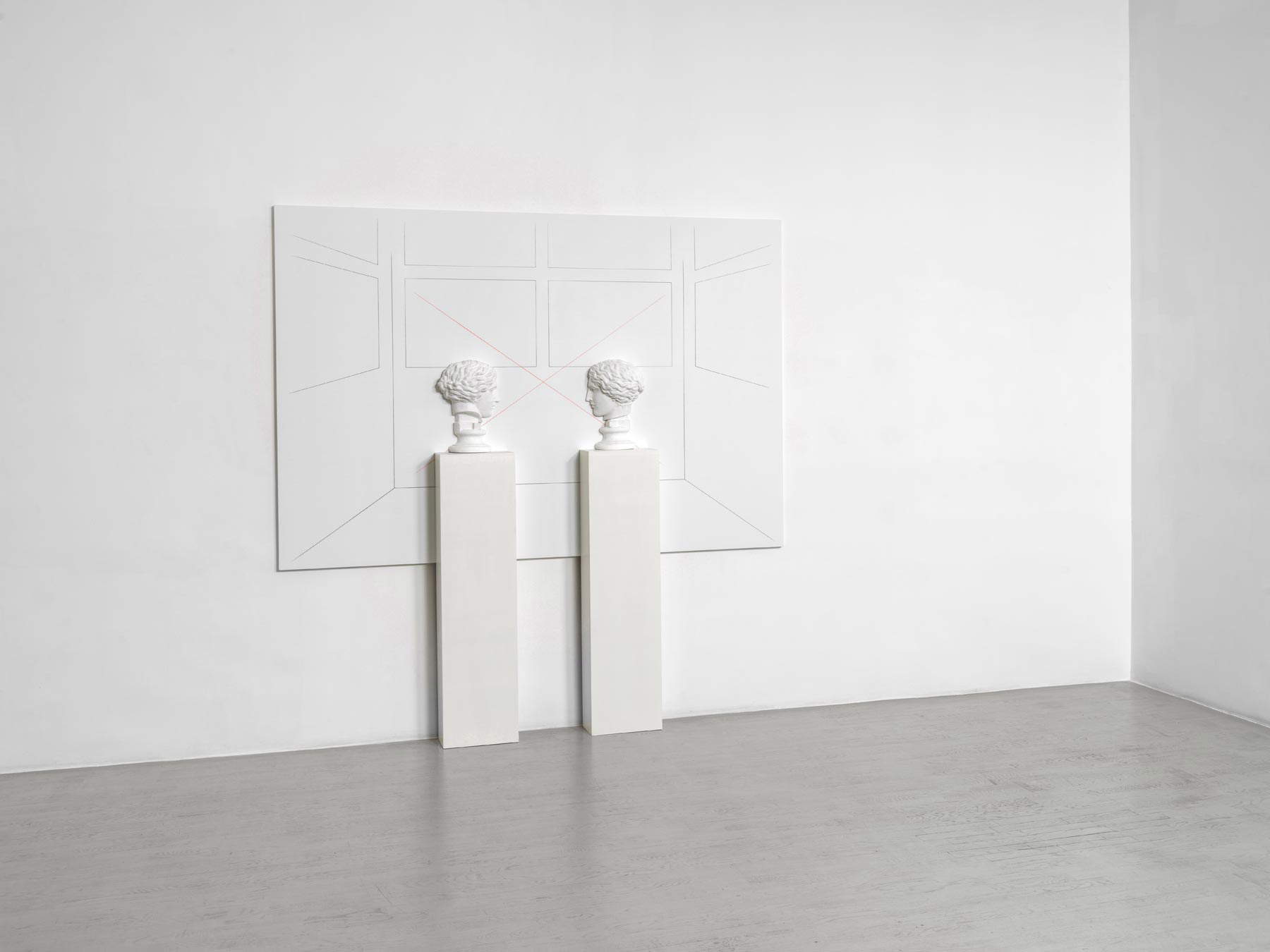 |
| Vis-à-vis (Amazon). Photo: Grafiluce |
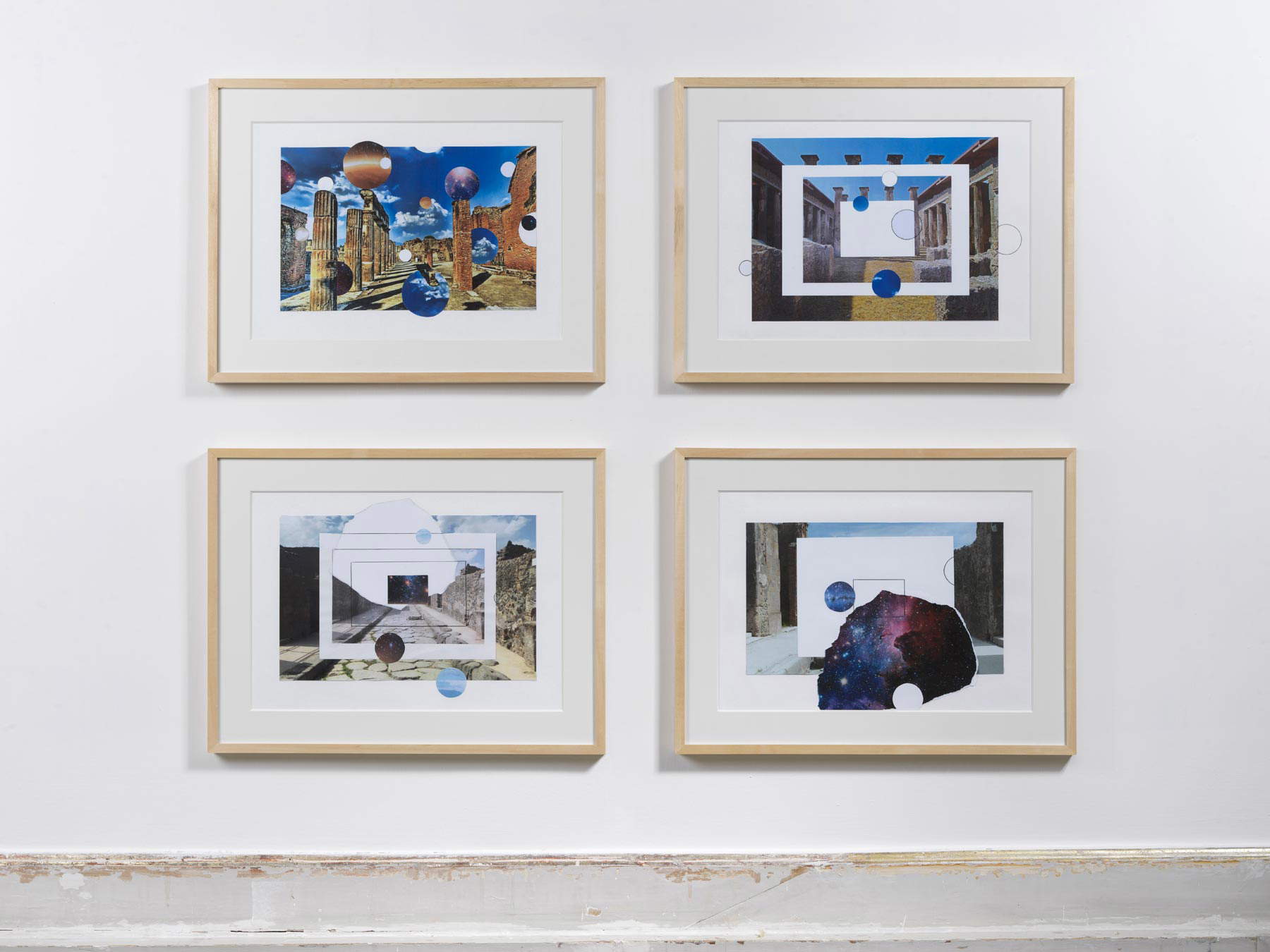 |
| Collages on Pompeii. Photo: Grafiluce |
 |
| Staged (Gilles). Photo: Grafiluce |
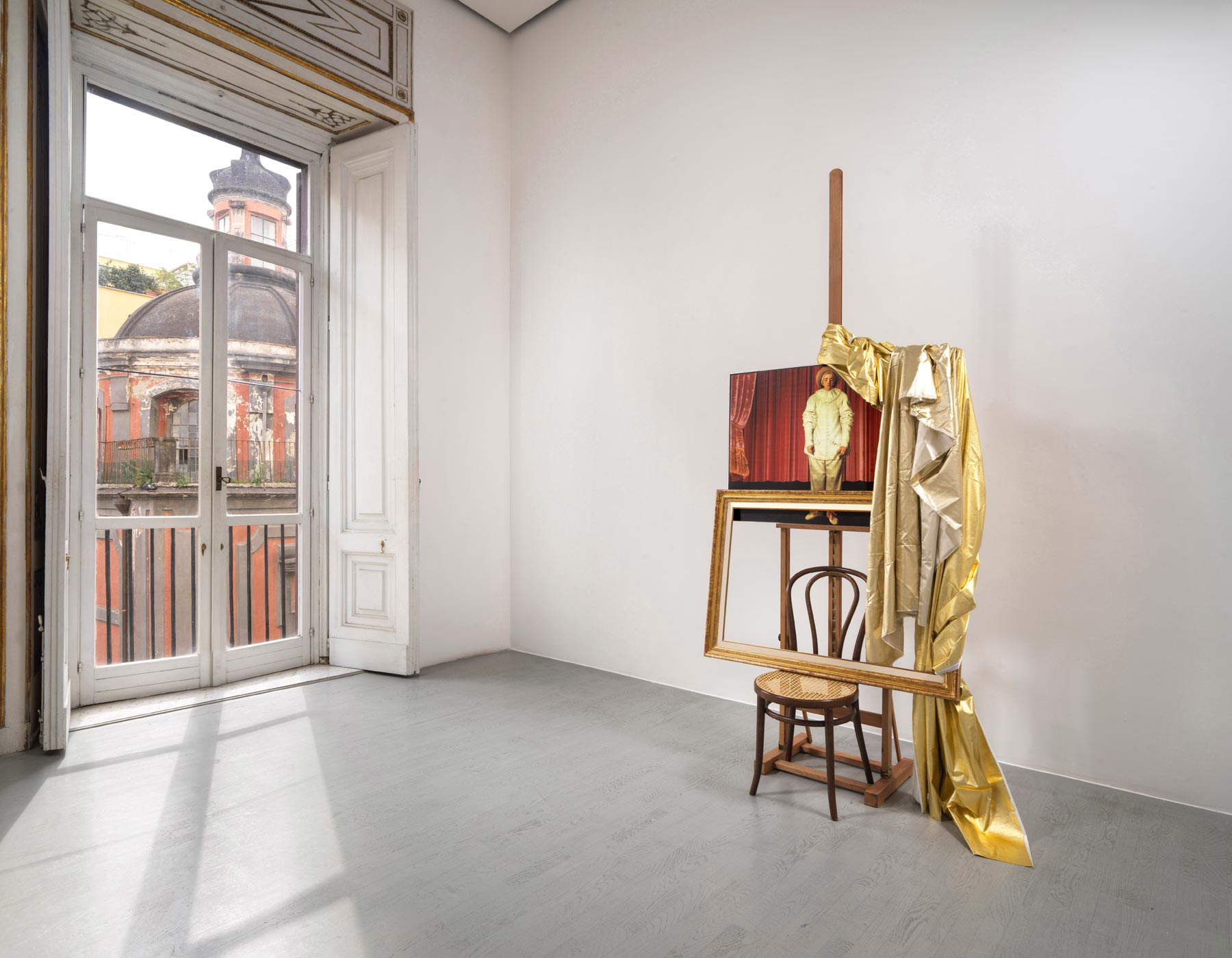 |
| Staged (Gilles). Photo: Grafiluce |
Again, one of the central works in the exhibition is the previously unseen In scena (Gilles), where we see a photograph of the Gilles that Watteau painted in Pierrot, dit autrefois Gilles at the center of a curtain, with the painting in turn placed on an easel set behind a chair with a frame and a golden curtain over it. It is interesting this dialectic between the intimate dimension of the artist and the public dimension, which has become particularly topical in this age of pandemic, of absence of contact (with the public and beyond). What is your attitude toward the time we are living in?
Thank goodness, since I do not have the obligation of direct and decisive contact with the public and daily reality, I find myself exempt from immediate correspondence and can let everyday reactions and emotions settle in.
In the exhibition we can also see three works Piazza d’Italia, homages to Giorgio de Chirico made in the early 2000s, as well as works from which a kind of voix du silence emerges, brought back here to an “authentic and original” dimension, to use two adjectives that you attribute to De Chirico’s squares. Does the choice to bring these works into the exhibition have anything to do with what we are experiencing at this time?
Everything has to do, more or less directly, with society and, in a broader sense, with life. It is therefore inevitable to refer to something that dwells both inside and outside of us.
In the work Vis-à-vis (Amazon), the dialectic between two confronted classical works, one of perhaps the most well-known elements of his art, returns. How have you declined it in this 2019 work?
As always, the “characters” in my works are solitary even when placed in front of each other. Mimesis takes up, reflects the same image that therefore doubles in front of itself. Similarly, the two profiles of Vis-à-vis (Amazon) are actually the two halves, left and right, of a single figure. This is how a silent dialogue manifests itself as the recitation of a monologue.
In 1991, Giuliano Briganti wrote that you are, of today’s artists, perhaps the one who has most “calculated what cards remain in an artist’s hand to be ’still’ an artist today.” The great historian and critic, in particular, wrote that in Her path some fundamental characteristics have remained unchanged: atmospheric purity, silence, “lightness,” intellectual elegance, elements that perhaps distinguish the artist even more than the works (Briganti attributed to Her a thought: “the works do not remain, it is the artist who remains”). Thirty years have passed: what do you think are the “cards” for still being an artist in 2021 instead?
My long-standing friendship with Giuliano Briganti reminds me of something precious and reassuring ... the extent of his knowledge went so far as to consider the overall arc of Art History with a special completeness. With respect to the question of what “cards” to put on the table today, I believe that the artist is left holding the same cards as the artist of yesterday.
One last question: the Fuori Quadro exhibition comes on an important anniversary. In 2020 it was sixty years since his first work (Geometric Drawing: a reference is also in Vis-à-vis) and 2021 constitutes the sixtieth anniversary of his debut, at the 1961 Premio Lissone. Sixty years of career is a remarkable milestone, but You will certainly not stop: what should we expect from You in the future? What are the aspects of Your research that You propose to deepen in the time to come?
In time (with age) I think I will practice a more moderate and reflective pace. I am keen to let settle the many suggestions that still loom on the horizon. Emerging now, though without becoming intrusive, are personal memories that surface to an unobtrusive degree in the context of a less pressing everyday life.
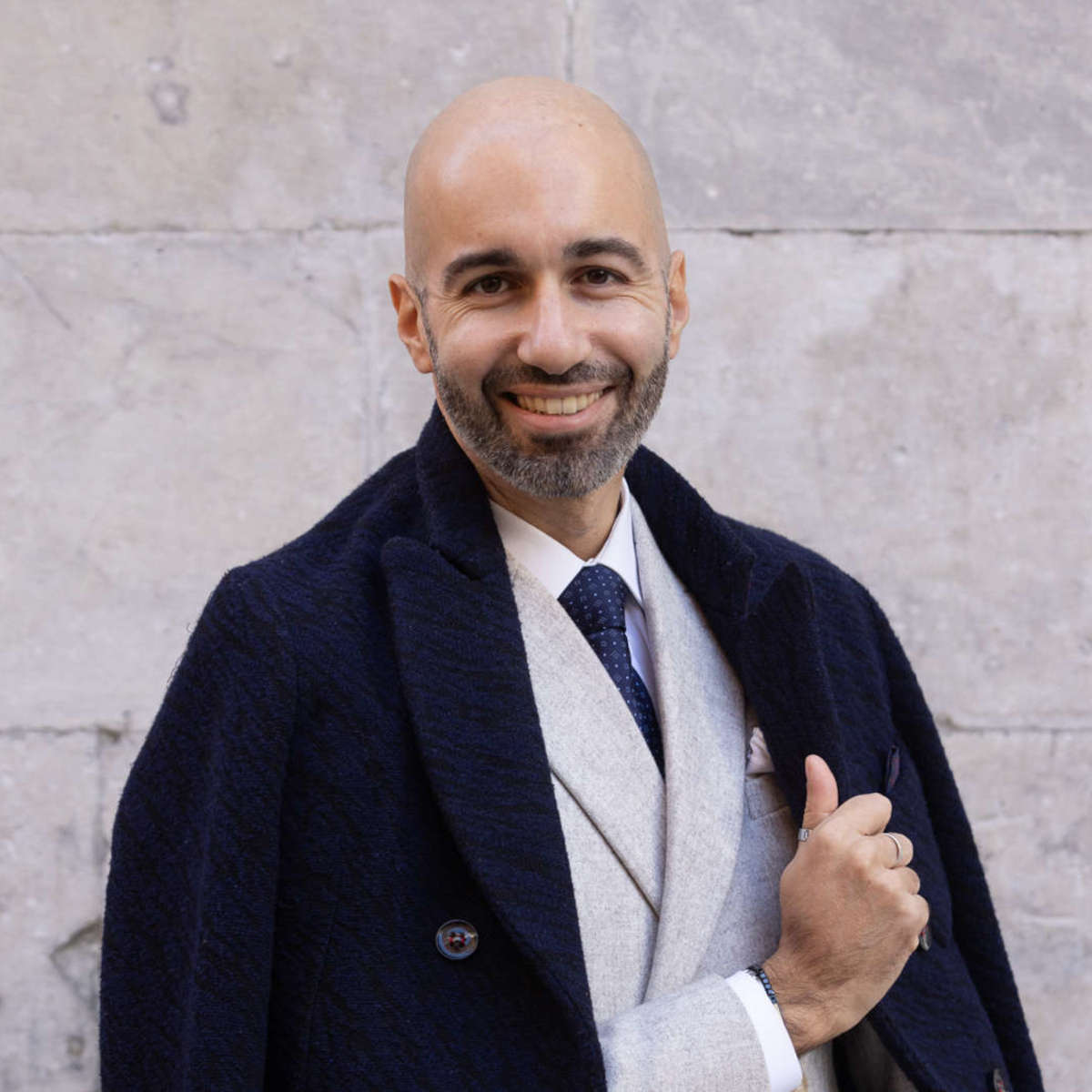
The author of this article: Federico Giannini
Nato a Massa nel 1986, si è laureato nel 2010 in Informatica Umanistica all’Università di Pisa. Nel 2009 ha iniziato a lavorare nel settore della comunicazione su web, con particolare riferimento alla comunicazione per i beni culturali. Nel 2017 ha fondato con Ilaria Baratta la rivista Finestre sull’Arte. Dalla fondazione è direttore responsabile della rivista. Nel 2025 ha scritto il libro Vero, Falso, Fake. Credenze, errori e falsità nel mondo dell'arte (Giunti editore). Collabora e ha collaborato con diverse riviste, tra cui Art e Dossier e Left, e per la televisione è stato autore del documentario Le mani dell’arte (Rai 5) ed è stato tra i presentatori del programma Dorian – L’arte non invecchia (Rai 5). Al suo attivo anche docenze in materia di giornalismo culturale all'Università di Genova e all'Ordine dei Giornalisti, inoltre partecipa regolarmente come relatore e moderatore su temi di arte e cultura a numerosi convegni (tra gli altri: Lu.Bec. Lucca Beni Culturali, Ro.Me Exhibition, Con-Vivere Festival, TTG Travel Experience).
Warning: the translation into English of the original Italian article was created using automatic tools. We undertake to review all articles, but we do not guarantee the total absence of inaccuracies in the translation due to the program. You can find the original by clicking on the ITA button. If you find any mistake,please contact us.